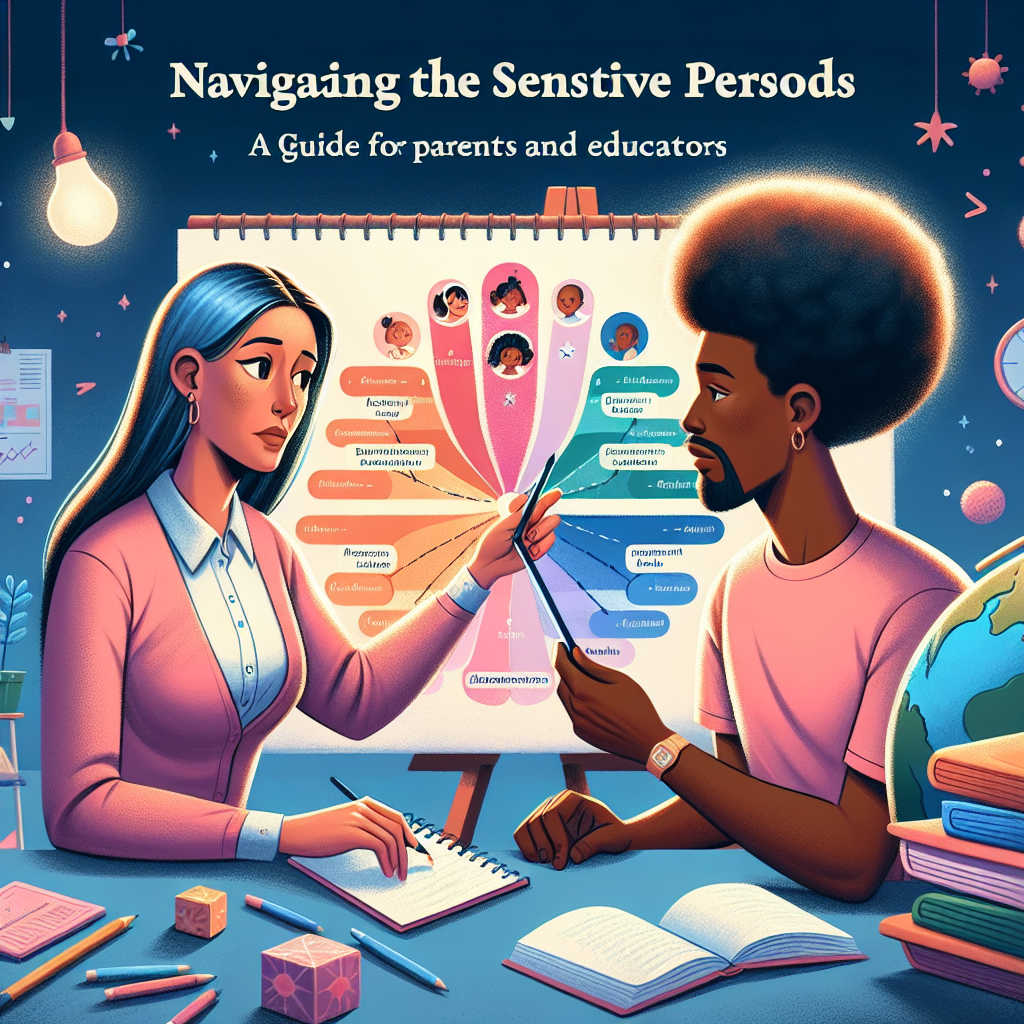
Introduction
When it comes to childhood development, understanding the concept of sensitive periods can be transformative. Imagine having the key to unlock your child’s potential just when they need it most. Navigating the Sensitive Periods: A Guide for Parents and Educators takes you on a journey through these crucial developmental phases, providing valuable insights that can help you support children’s learning and growth.
Sensitive periods are specific windows in a child’s early life when they are particularly receptive to certain kinds of learning. These unique opportunities can serve as launching pads for lifelong skills and interests. However, navigating these periods can be challenging. How can you recognize these moments? What can you do to support your child or students through them? This guide aims to answer these questions and inspire you to embrace these pivotal moments.
Understanding Sensitive Periods
Sensitive periods, a concept popularized by Dr. Maria Montessori, highlight distinct times in a child’s development when they are more open to acquiring new skills or knowledge. These periods can occur for various developmental areas, including language acquisition, spatial awareness, and social skills. Educators and parents who recognize and adapt to these sensitive periods can profoundly influence a child’s learning trajectory.
The Science Behind Sensitive Periods
Sensitive periods can be understood through the lens of neurodevelopment. During these times, certain neural pathways are forming rapidly, making children particularly responsive to specific stimuli. For instance, the sensitive period for language acquisition generally occurs between birth and age six, where children can absorb languages effortlessly.
Key Features of Sensitive Periods
| Feature | Description |
|---|---|
| Duration | Varies from child to child, typically spans a few months. |
| Intensity | Heightened focus on particular skills or knowledge areas. |
| Receptiveness | Greater ability to absorb and retain information. |
| Criticalness | Missing these windows may limit future learning opportunities. |
By understanding these features, parents and educators can tailor their approaches to meet children where they are developmentally.
Identifying Sensitive Periods
Recognizing the sensitive periods in a child’s development involves keen observation and responsiveness. Here’s how to identify them:
1. Pay Attention to Interests
Children may show an intense interest in a particular activity, such as building blocks or learning new words. Noting these interests can help guide educational activities that align contextually and emotionally.
2. Look for Signs of Frustration
A child’s frustration can also signal a sensitive period. For instance, if a child is struggling with social interactions, it may indicate they are at a crucial stage for developing social skills.
Case Study: The Reading Revolution
Consider Maria, a five-year-old who became fascinated with letters and spelling. Recognizing her interest, her parents provided her with books, letter games, and opportunities to explore language. As a result, Maria learned to read a year ahead of her peers, showcasing the profound impact of engaging a child during their sensitive period for language acquisition.
Analysis
Maria’s case highlights the importance of providing resources and support when a child shows interest. By nurturing this sensitive period, her parents set the foundation for lifelong literacy.
Strategies for Parents and Educators
Navigating the sensitive periods requires intentionality and flexibility. Here are some proven strategies:
1. Create a Rich Learning Environment
Provide materials and experiences that align with children’s interests. This may include diverse books, art supplies, or open-ended toys that encourage exploration.
2. Foster a Sense of Independence
Encourage children to explore their interests on their own. For instance, allow them to choose activities that excite them, which can deepen their engagement and enthusiasm.
3. Encourage Exploration and Play
Create opportunities for children to explore their interests in a playful manner. The freedom to experiment is critical during sensitive periods.
4. Be Patient and Open
Child development is not linear. Be prepared to adapt your methods as children’s interests and developmental needs evolve. Listening to children helps them feel understood and nurtured.
Case Study: Social Skills Development
Take the example of Liam, a four-year-old who struggled with sharing during playtime. His teachers organized small group activities that focused on cooperative games. With guidance, Liam learned to navigate social interactions and developed friendships.
Analysis
Liam’s case illustrates that understanding sensitive periods for social skill development can lead to significant improvements when educators offer tailored social activities. By fostering an environment where children can practice these skills safely, they gain confidence and competence.
Creating a Supportive Community
Building a network of support—including fellow parents, educators, and professionals—can enhance children’s experiences during their sensitive periods. Collaborating allows for sharing resources and strategies that can enrich a child’s learning environment.
1. Join Parent-Teacher Associations
Engaging with PTAs can provide opportunities for parents and educators to share insights about sensitive periods and best practices.
2. Utilize Online Resources
Many parent forums and educational websites offer extensive resources on sensitive periods, enabling continuous learning and adaptation to children’s needs.
Addressing Common Concerns
1. How do I know if my child is in a sensitive period?
Look for behaviors that indicate strong interest or heightened awareness in specific areas, such as language, mathematics, or social skills.
2. What should I do if I miss a sensitive period?
It’s never too late! Although there may be optimal times for learning, children can still develop skills later on. Provide opportunities and encouragement to revisit those areas.
3. Can sensitive periods vary by individual?
Yes! Each child is unique and may experience sensitive periods differently based on their individual development and interests.
4. What role does environment play in sensitive periods?
A rich, stimulating environment can significantly influence a child’s development during sensitive periods, providing countless opportunities for exploration and learning.
5. How do I maintain balance between guidance and independence?
Allow children to explore independently while providing scaffolding when necessary. Observe their interests, and step in when guidance is appreciated or needed.
Conclusion
Navigating the sensitive periods is a dynamic and rewarding endeavor for both parents and educators. By understanding child development and recognizing these critical windows of opportunity, you can provide essential support that fosters learning and growth.
Engaging in Navigating the Sensitive Periods: A Guide for Parents and Educators is not just about awareness—it’s about action. So, embrace the journey and celebrate those magical moments when a child’s potential unfolds. Your role in nurturing and guiding them through these sensitive periods is invaluable and will leave a lasting impact on their development.
Sharing this knowledge with your community can amplify its benefits, as we collectively support our children in reaching their highest potential. Together, let’s foster environments that thrive on exploration, independence, and mindfulness—all essential components for navigating the sensitive periods with success and joy.
FAQs Section
Here are five additional FAQs to guide you further on this illuminating journey of understanding sensitive periods:
Can sensitive periods overlap?
Yes, sensitive periods may overlap, allowing for simultaneous development in multiple areas.Is there a risk in focusing too much on sensitive periods?
Balance is key. While it’s beneficial to focus on sensitive periods, all children’s interests should be nurtured.How can technology be integrated during sensitive periods?
Educational apps and interactive tools can be valuable resources, provided they are age-appropriate and used in moderation.What are some signs that a child is feeling overwhelmed during a sensitive period?
Signs may include refusal to engage, tantrums, or regression in skill areas. Recognizing and responding with patience and support is crucial.- How can I support multiple children going through different sensitive periods?
Providing individualized support and flexible learning opportunities, along with a structured routine, can help manage varied needs and interests.
This guide serves as a foundation for recognizing and supporting sensitive periods, empowering you to create enriching experiences for the children in your care.

















